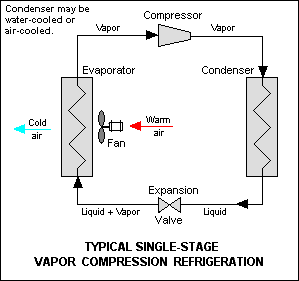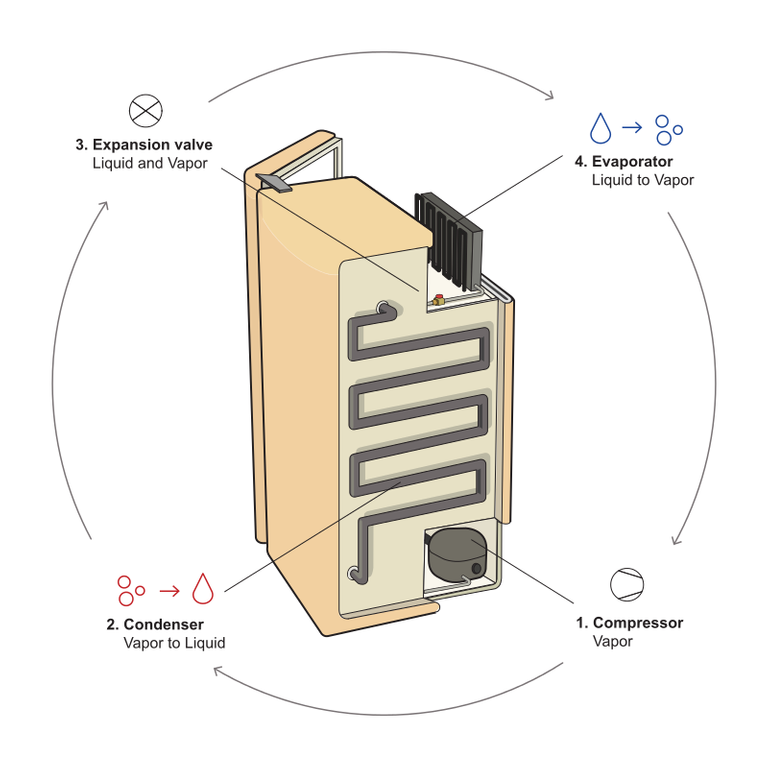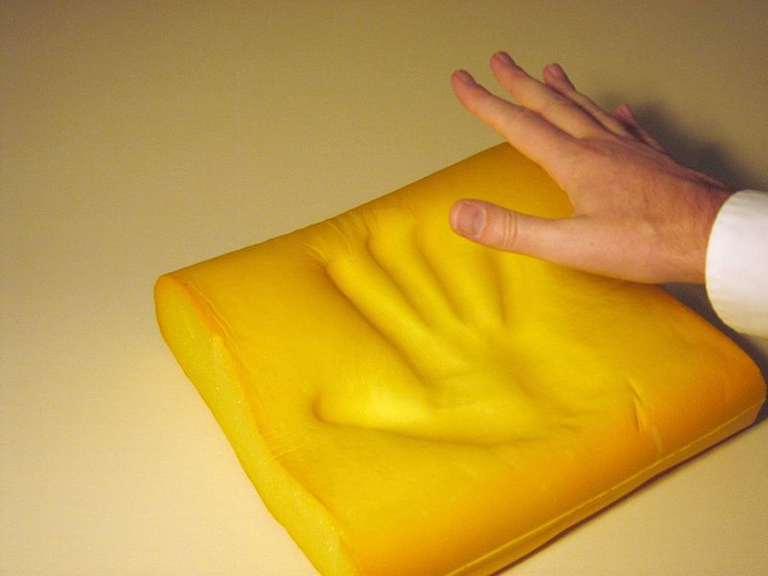How Do Refrigerators Work?
There are many types of refrigerators. Some are more efficient than others, and they can use different energy sources to operate. In addition to electricity, other energy sources can be used to run a refrigerator, including ammonia, water, or butane. Before purchasing a refrigerator, you should understand how it works.
Compressor
Compressors for refrigerators play a vital role in the cooling process of a refrigerator. They are essential because they regulate the flow of refrigerant gas through the refrigeration system. They are usually made from cellulose-based materials and meet rigorous standards of quality and performance. They can operate at different flow rates and conditions, and they are highly energy-efficient.

By Original Keenan Pepper at en.wikipedia, CC BY-SA 3.0, Link
The location of the compressor is important. A top-mounted compressor might be difficult to access, making repairs more difficult. On the other hand, a bottom-mounted compressor won't require ladders and will be more convenient to maintain.

Basic functioning of a refrigerator
Public Domain,Link
Peltier Refrigirator
Peltier refrigerators use a thermoelectric cooling system using semiconductors (typically p and n-type) to control temperature. A small electrical current is passed through a Peltier module, which changes the surface temperature of the cooling system. This effect maintains the desired temperature. In a standard Peltier refrigerator, the temperature difference is less than a few degrees Celsius.
Peltier refrigerators use electricity (typically 12-volt DC) to cool the air. However, they are inefficient and become less effective as their cooling effect increases. For this reason, they use fans and heat sinks to reduce the temperature differential. Another drawback of Peltier refrigerators is that they are not applicable to domestic refrigerators.
Compared to ordinary fridges, Peltier refrigerators offer rapid cooling. They can store up to six cans of beer in the same space as a traditional refrigerator. This feature helps them save energy by preserving ice, which can otherwise be lost in a traditional ice chest. Furthermore, they have easy maintenance. They require periodic vacuuming and dusting.
The Peltier effect is the principle behind thermoelectric refrigerators. The effect is based on the fact that heat from one junction can be converted into cold in the opposite junction. Therefore, the temperature gradient is positive for one semiconductor and negative for the other. These effects also work in a thermoelectric power generator.
Absorption Refrigirator
An absorption refrigerator works by using a heat source to drive the cooling process. Two coolants are used in the system: one cools the refrigerator's interior and absorbs heat from the second. This process requires a source of heat to reset the two coolants to their original states. This makes the absorption refrigerator a very energy-efficient appliance.
Absorption refrigerators use a liquid with a very low boiling point, such as ammonia. This liquid is able to continuously boil and evaporate until it reaches the sub-zero boiling point. The hot air then moves out of the refrigerator, leaving the cold items inside. This process is very energy efficient, and most absorption refrigerators use only a small amount of fuel.

Absorption cooling process
By Goran tek-en, CC BY-SA 4.0, Link
Absorption refrigerators can be used for residential and commercial use. They are ideal for long trips because they can keep food cool without the use of electricity. Some absorption refrigerators are even small enough to fit into recreational vehicles. They are also perfect for remote cabins with no power grid.
Aluminum in Refrigirators
Aluminum in refrigerators plays a significant role in the thermal transfer between the inner and outer walls of a refrigerator. The material is used to bond the condenser tube to the outer wall of the refrigerator. A new study by Gupta and Gopal developed a mathematical model to measure thermal transfer.
Another utility model is a full-aluminium pipe refrigerator. This type of refrigeration pipe is composed of several S-shaped elements arranged behind a start element. The end element is connected directly to the start element and locates the last layer. In this way, the refrigerator can be made smaller, lighter, and more energy efficient.
Another reason for using aluminium in refrigerators is because it is more durable. In fact, it has higher corrosion resistance than galvanized steel. In addition, it is stronger than other metals and is more suitable for commercial applications. However, it is important to note that this material will corrode if exposed to salt or fatty acids.
Even though aluminium is a great material for making refrigerators when storing food in them, the best practice is to avoid aluminium foil. While it is a quick way to store food, aluminium foil has many potential health risks. Aluminium foil can also allow bacteria to grow. Luckily, aluminium foil is not the source of botulism. The bacterium does not have a specific affinity for aluminium, so it cannot cause the disease.
Steel in Refrigirators
There are two different types of steel used in refrigerators. The first type is stainless steel. This is a strong material, typically made from 18% chromium and 8% nickel. The second type is called austenitic steel, which contains a small amount of carbon. Both types are resistant to corrosion, but there are certain differences between them.
Stainless steel is available in different colours. Generally, it is more expensive than regular steel. The prices of stainless steel refrigerators range from $120 to $800. The prices of stainless steel refrigerators depend on the type and size of the appliance. Compact and mini-refrigerators are the cheapest types. Compact refrigerators are ideal for apartments and smaller spaces.
Polyuethane Foam in Refrigirators

By Johan - Own work, CC BY-SA 3.0, Link
Refrigerators contain polyurethane foam, which acts as insulation for the unit. The polyurethane foam also helps to keep the fridge cool by absorbing heat. The foam can also be recycled. Unfortunately, many older refrigerators use chlorofluorocarbons or hydrochlorofluorocarbons, which are ozone-depleting gases.
The use of HFCs as a refrigerant in refrigerators is prohibited under state regulations. However, manufacturers of ice cream freezers, can coolers, and commercial refrigerators still use HFCs for foam insulation. But there are now alternative types of foam that are more environmentally friendly.
Rigid polyurethane foam is a type of insulation that offers structural support as well as insulation. The material is characterized by high compressive and shear strengths. It can span long distances and is able to support the weight of the refrigerator components. It is also capable of performing thermal insulation.
The energy efficiency of foam cooling units is an important parameter to monitor. It depends on the compressor used as well as the refrigerant technology used in the appliance. Hence, it is important to test a large number of units to achieve a statistically significant result. The energy efficiency check should also take into account the amount of electricity consumed during a period of time.
Expansion valve
Refrigerator expansion valves are designed to help regulate the expansion and contraction of cold equipment. They're made of durable materials like copper alloy and are designed to last for many years. They keep cold equipment running efficiently and help prevent spoiled food. Expansion valves can be used in countertop freezers, bar back coolers, school milk coolers, and more.

By MasterTriangle12 - Own work, CC BY-SA 4.0, Link
A typical expansion valve for refrigerators comprises a body and a seat. A needle extends from the valve body and is guided in an axial direction by first and second guide means. The resilient means tends to move the needle into engagement with the valve seat. Another guide means engages the needle and moves the needle away from the valve seat.
In some refrigeration systems, the expansion valve is controlled electronically, rather than mechanically. This allows it to react to electronic signals and optimize the flow of refrigerant in the evaporator. Compared to mechanical valves, electronic expansion valves are more efficient and require fewer maintenance checks. Moreover, they offer better flexibility and control range.
Learn more:
𝙍𝙚𝙛𝙚𝙧𝙚𝙣𝙘𝙚𝙨
- Refrigerators, Canada Science and Technology Museum
- "The Refrigeration Cycle: Central Air Conditioner For Homeowners".
- Refrigerator. (2022, September 23). In Wikipedia. Link
- List of polyurethane applications. (2022, July 24). In Wikipedia. Link.
- The History of the Refrigerator and Freezers

Written by @gamsam
All images used are copyright free


https://twitter.com/1086197187619573760/status/1579531194907394049
The rewards earned on this comment will go directly to the people( @gamsam ) sharing the post on Twitter as long as they are registered with @poshtoken. Sign up at https://hiveposh.com.
Congratulations @gamsam! You have completed the following achievement on the Hive blockchain and have been rewarded with new badge(s):
Your next target is to reach 800 posts.
You can view your badges on your board and compare yourself to others in the Ranking
If you no longer want to receive notifications, reply to this comment with the word
STOPTo support your work, I also upvoted your post!
Support the HiveBuzz project. Vote for our proposal!
Thanks for your contribution to the STEMsocial community. Feel free to join us on discord to get to know the rest of us!
Please consider delegating to the @stemsocial account (85% of the curation rewards are returned).
Thanks for including @stemsocial as a beneficiary, which gives you stronger support.
I didn't know about this many types of options , one observation you are misspelling refrigerator :)

!1UP
Haha... didn't notice it. Thank you, will correct that.
You have received a 1UP from @gwajnberg!
@ctp-curator, @stem-curator, @neoxag-curator, @pal-curator
And they will bring !PIZZA 🍕.
Learn more about our delegation service to earn daily rewards. Join the Cartel on Discord.